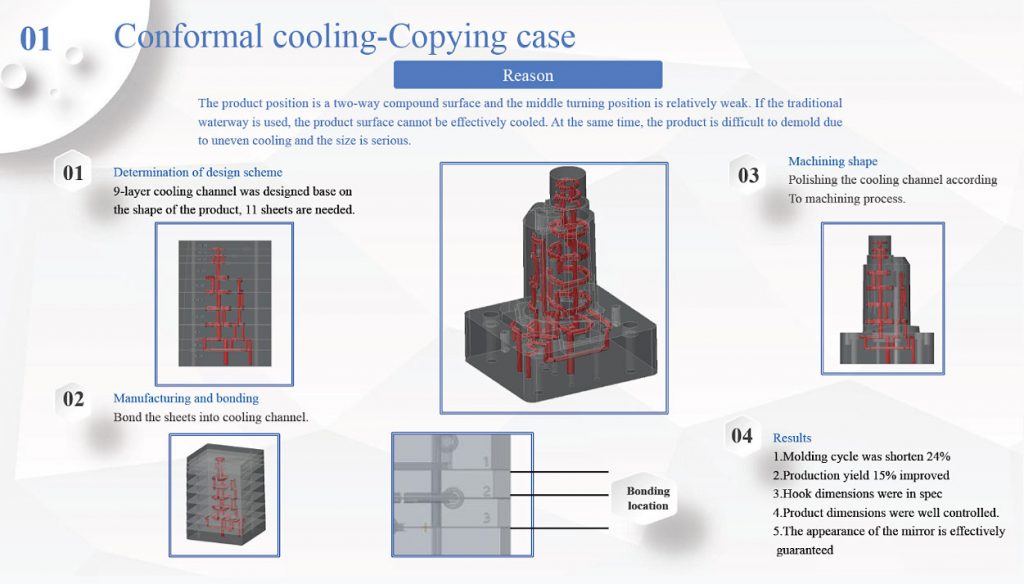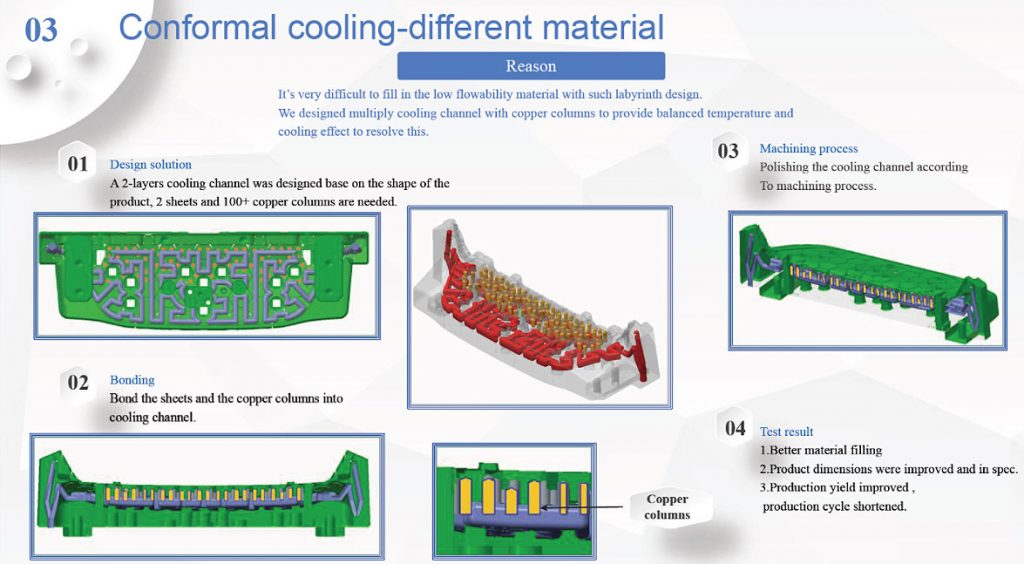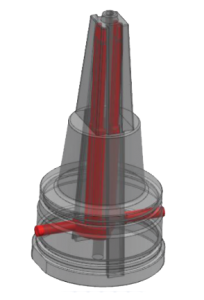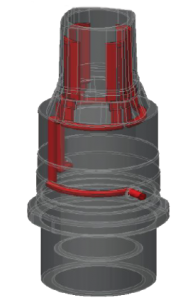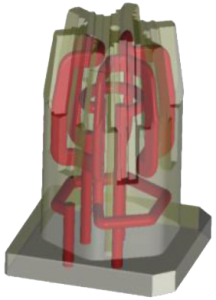What is Conformal Cooling?
It is a non-traditional cooling design in an injection mold. Conformal cooling is a highly complex cooling channels design that aims to parallel with the plastic part geometries or mold cavity shape—the manufacture of conformal cooling has much complexity.
Benefit of Conformal Cooling ?
- Eliminate Hot spots in the mold Shorter Cycle time
- Improve Mold cooling efficiency
- Less of Injection Molding problem
- Improve plastic part quality
- Higher Productivity
Principle of Conformal Cooling (Diffusion Bonding Technology) ?
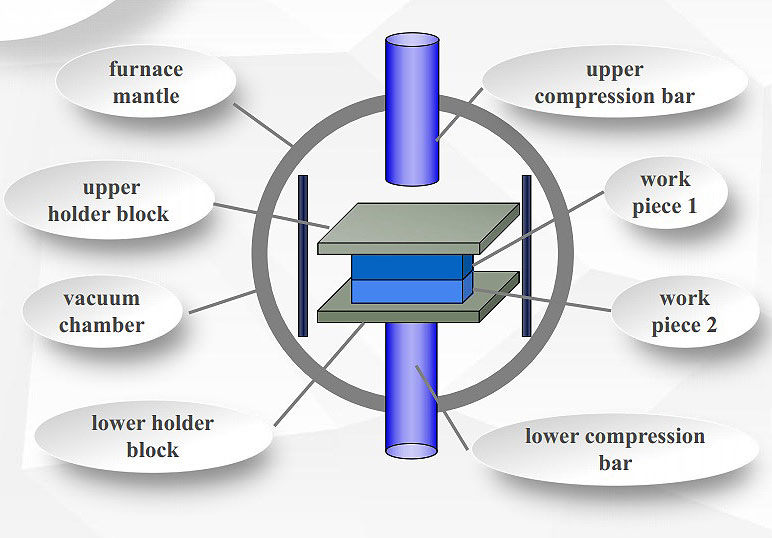

Solid-state joining
Initial state Connect the work pieces in solid state

Apply heat/ stress
Initial plastic deformation Realize the dense connection of large area with tiny plastic deformation on the interface

Preserve heat
Inter diffusion and migration of atom Atom inter-diffusion on the interface and interface migration

Organizational integration
Disappearance of interface and holes Integration the work pieces with seamless connection
Bonding test results-steel
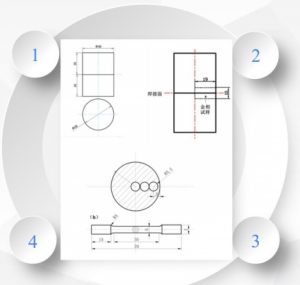
1. Metallographic analysis
No visible defects or welding traces on the surfaces; after Metallographic etching, the bonding rate is 100% under a 200x microscope and no defect was found.
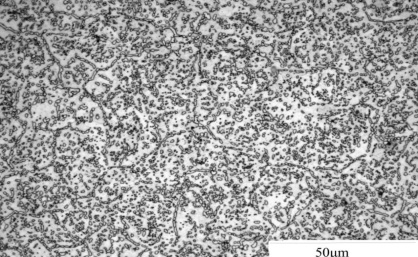
2. Strength
Tensile strength after welding is shown in blow pic.. The strength increase gradually from the central area to outer-ring area. Break occurred when the tensile strength is around 800MPa~900MPa., which shows that joint strength is superior to those processed by heat treatment under the same condition

4. Conclusions
- Diffusion bonding can realize the material connect without defect
- The hardness and strength of welded joint can meet customer usage requirements
- The welded joint can go through heat treatment, such as quenching and tempering.
- Diffusion bonding have no impact on material polishing performance
3. Hardness test
After welding the sample hardness is around 35~40HRC, hardness of the central area is slightly low, while the outer-ring area show high hardness
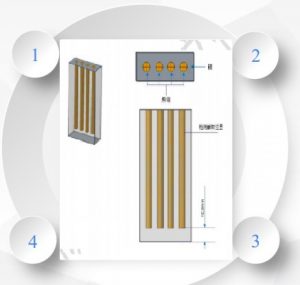
Bonding test results-different material

1. Experimental method
The test material is steel with length (50 mm), width (20 mm), and height (100 mm); And copper with a diameter of 6 mm. That makes them bonding. It is processed to the level required by the process before bonding
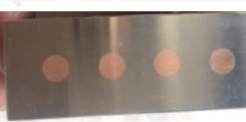
2. Sampling Position
Take the middle section of the welding block and observe the surface metallography and connection condition.
4. Conclusions
- Oxygen-free copper is tightly combined with die steel, without holes, cracks, and loose defects.
- The interface between stainless steel and oxygen-free copper has no physical defects such as microscopic voids and cracks.
- A “copper-steel” metallurgical diffusion bonding zone with uniform width is formed at the interface, and intergranular diffusion of copper to steel occurs. The depth of the diffusion layer is about 10 microns.
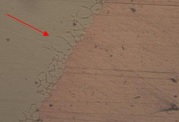
3. Metallographic analysis
A "copper-steel" metallurgical diffusion bond zone with uniform width was formed at the interface, and intergranular diffusion of copper to steel occurred. The depth of the diffusion layer was measured to be about 10 microns.
Technological process
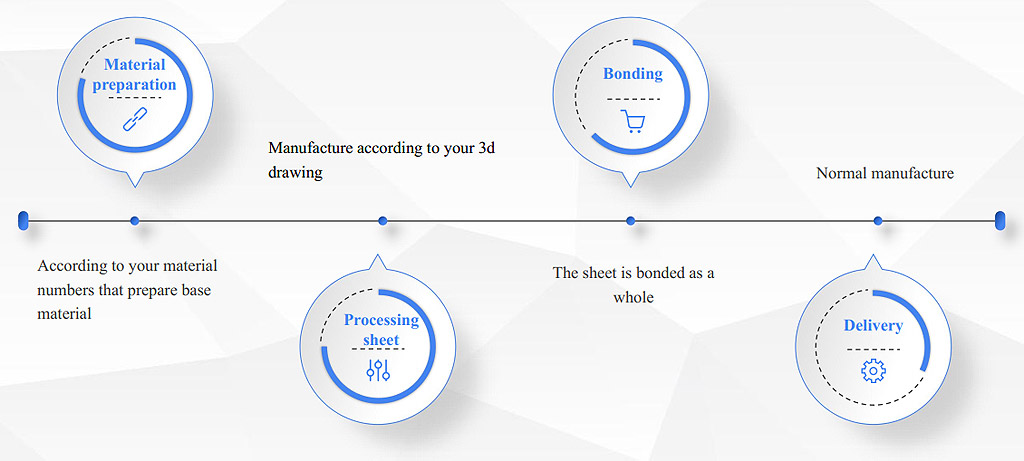
Cases Sharing
